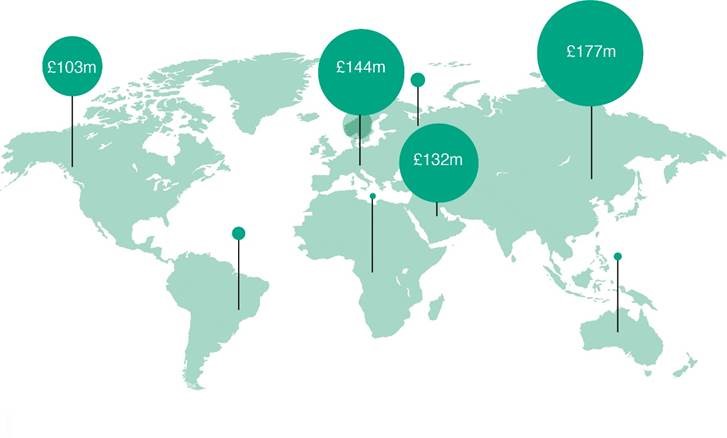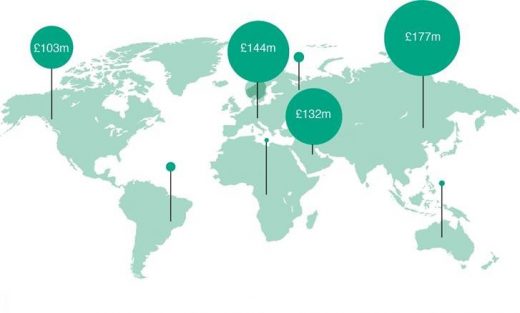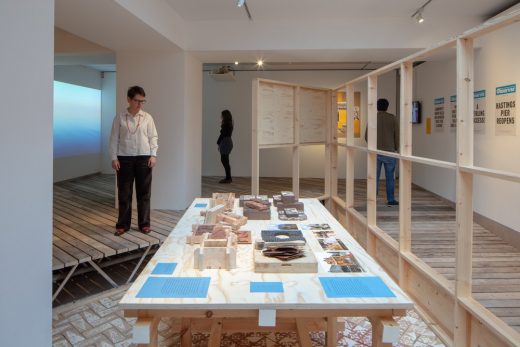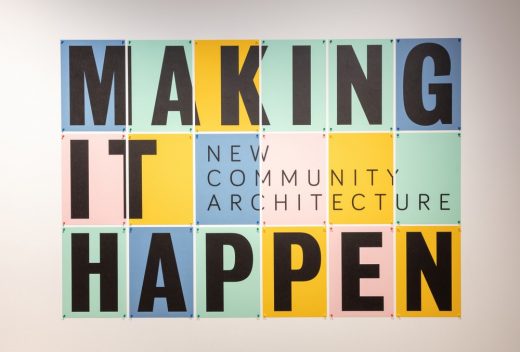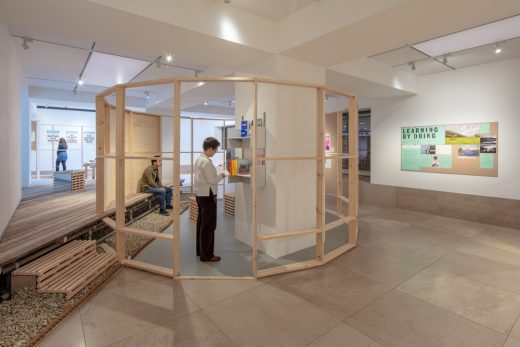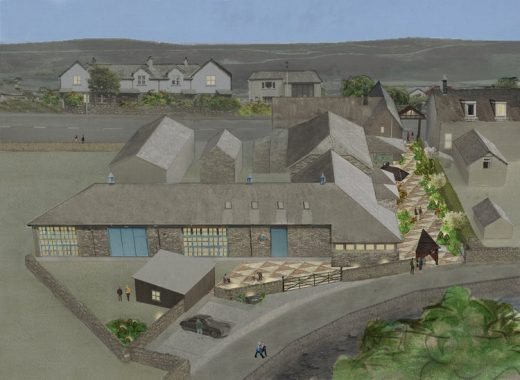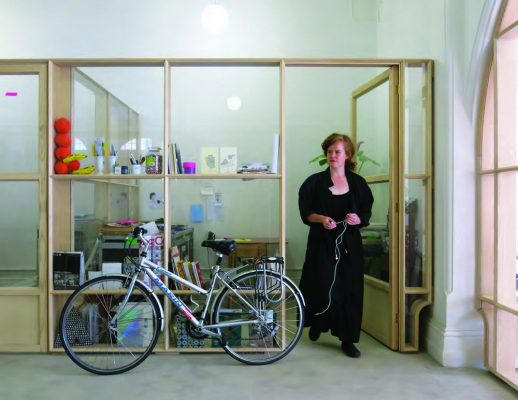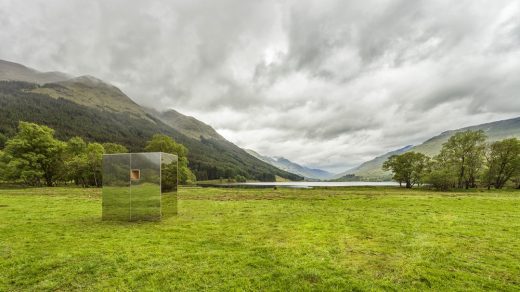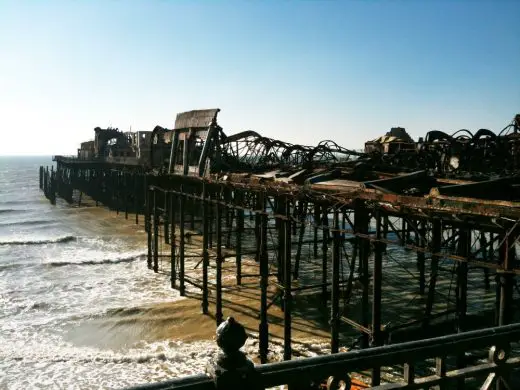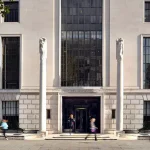RIBA Events 2019, Architecture Gallery London, UK Buildings, British Architects News
RIBA News & Events 2019
Royal Institute of British Architects Exhibition + Talks + Events in London, England, UK
RIBA News & Events in 2019
RIBA News 2019
19 Dec 2019
Surge in workload predictions – RIBA Future Trends survey November 2019
After plummeting to -10 in October 2019, the RIBA Future Trends Workload Index jumped 13 points in November to +3; one of the largest increases in workload predictions the monthly RIBA survey has seen.
Most regions showed an increase in optimism during the month; participating practices in Wales & the West returned a +10 balance (up from -25), while the North of England returned a figure of +16 (up from +6). Practices in London and the South of England both had a zero-balance figure, up from -13 and -21 respectively. Only the Midlands & East Anglia region was less positive, returning a balance figure of -6 in November.
In terms of practice size, small practices (1-10 staff) showed a 16-point increase since October to +1, while medium-sized practices soared to +42 (from +31), and large practices remained consistent at +25.
Whilst remaining in negative territory, sentiment improved across all sectors in November. The community sector, the commercial sector and the private housing sector were all at -4, and the public sector rose to -3.
The Future Trends Staffing Index, which measures expectations of the number of permanent staff over the next three months, increased three points in November, to +2.
RIBA Head of Economic Research and Analysis, Adrian Malleson, said:
“The November 2019 workload predictions suggest a moment of recovery for the architectural community, with some pre-election optimism about increases in enquires and an expectation of a rise in work.
Nevertheless, the architectural market remains fragile and uncertainty persists with practices continuing to report projects failing to move beyond planning, client caution and downward pressure on fees. We can expect further fluctuations in the index over the coming months, as architects respond and adapt to the changing landscape.”
19 Dec 2019
RIBA responds to Queen’s Speech
“The Queen’s Speech outlines a substantial programme of actions and emphasises the scale of the challenges facing the country – not least in tackling the housing crisis, dealing with the climate emergency and moving forward with Brexit. The RIBA will continue to encourage Government to draw on the expertise of architects to address these vital issues.
We await more detail on the new fire safety Bills outlined. New legislation must take a holistic view of the issues and urgently introduce clear and robust regulations. We have been clear that action is long overdue: England continues to lag behind other countries in the UK and across the world on fire safety, putting lives at risk.
We welcome the commitment to tackling the lack of resourcing in planning departments. The RIBA has long campaigned for this, and we look forward to working with government nationally and locally to ensure that new resourcing meets the challenge of the housing crisis and reflects the broad range of professional expertise required to deliver high quality buildings, places and communities.”
Alan Jones, RIBA President
13 Dec 2019
RIBA reacts to General Election outcome
RIBA President, Alan Jones, said:
“Many people will remember this as the ‘Brexit election’. The Conservatives must now deliver on their promise to resolve the political crisis which has been paralysing wider society and the economy.
The RIBA has been clear that this involves developing trade deals which allow practices to access talent, goods and services, and will welcome further detail on how this will be achieved.
The new government must bring the country together by turning promises into action. We need critical investment to solve the housing crisis through high-quality planning and homes, initiatives to tackle climate change and complete reform of our fire and building safety regulations to keep people safe.”
6 Dec 2019
International demand for UK architecture expertise soars – RIBA publishes 2019 business trends report
The Royal Institute of British Architects (RIBA) has today (4 December 2019) published its annual summary of business trends in architecture and construction sectors. The RIBA’s annual Business Benchmarking report tracks UK architects’ turnover and salaries, and identifies global growth areas for the export of UK architecture expertise.
Drawn from data provided by RIBA’s Chartered Practices, the Business Benchmarking Survey has been conducted since 2012, providing a record of trends over time.
This year’s report shows a resilient architectural profession directly contributing £3.6bn to the UK economy and flourishing overseas.
Key trends revealed in the 2019 RIBA Business Benchmarking report include:
• Revenues are up by 13% in the last 12 months and have cumulatively more than doubled since 2012.
• The overall value of international (non-UK) work has increased since 2018 by 22% to £625m.
• Three years after the UK’s referendum on leaving the EU, the value of revenue from work in the EU is now the highest it has ever been, growing by 73% since 2015. The EU is the most important source of international work for small and medium-sized architecture practices.
• Three out of every four pounds earned from outside the UK goes to larger practices (100+ staff).
• Asia is the most valuable source of work outside of the UK for Chartered Practices overall, accounting for 28%, and is the fastest growing source of international revenue, growing from £77 million to £177 million worth of work since 2015.
• Work from projects in the Middle East has risen to £131 million, from £104 million last year.
Since the survey in 2012, the number of RIBA Chartered Practices has increased from approximately 3,000 to 3,600 and revenue has more than doubled to £3.6bn (from £1.6bn).
RIBA CEO, Alan Vallance, said:
“The 2019 RIBA Business Benchmarking report illustrates unabated demand for UK architects internationally. Significant increases in work in Asia, the Middle East and Europe clearly indicate the value of British expertise and the importance of further developing relationships in these growing markets. For practices relying solely on UK income, political uncertainty is a continuing worry. Whoever forms the next government must set out a comprehensive vision that enables the architecture profession to continue to thrive in the EU and beyond.
As a global professional body, the RIBA sets standards and drives excellence in architecture all over the world. We assist architects, wherever they live or work, and are expanding our international network to be able to provide even more tailored support in important markets, including China and the Middle East.”
The Executive Summary of the 2019 RIBA Business Benchmarking report is available at: https://www.architecture.com/business-benchmarking
The full RIBA Business Benchmarking report is exclusively available for RIBA Chartered Practices: https://www.architecture.com/knowledge-and-resources/resources-landing-page/riba-business-benchmarking-reports
6 Dec 2019
RIBA 2020 Honorary Fellowships
The Royal Institute of British Architects announce the 2020 RIBA Honorary Fellowships, which will be awarded to individuals from diverse backgrounds, including property, infrastructure, arts and architectural design:
RIBA 2020 Honorary Fellowships News
26 Nov 2019
RIBA responds to Conservative Manifesto
“The Conservative Manifesto highlights that the UK’s architecture sector is “world-leading”, but this status can only be maintained if the profession can access the right talent, and trade smoothly in the UK, and with Europe and the rest of the world.
I welcome the recognition of the need for more high-quality, environmentally friendly homes across the country – but the Conservative Party’s continued commitment to permitted development rights is inconsistent with this. Councils and local communities are currently powerless to stop the conversion of office blocks into poor quality housing that sidesteps vital quality and sustainability standards. The creation of high-quality and well-designed homes and the spaces around them relies on resourced and skilled local authorities, and professional expertise from project inception to finish.
It is encouraging to see the Conservative Party recognise the need to create more affordable, accessible homes for disabled people and the aging population. The RIBA’s research shows that housing for older people is creating the country’s hidden housing crisis.
The next government must prioritise a commitment to fire safety, mandating sprinklers in all new and converted residential buildings, enforcing the removal of dangerous Grenfell style cladding and urgently committing to a comprehensive review of building safety regulations. England’s rules lag shamefully behind those in other countries such as Wales and the USA, putting the public at risk.”
Alan Jones, RIBA President
21 Nov 2019
RIBA responds to Labour manifesto
RIBA President, Alan Jones, said:
“Labour’s commitments to tackle the lack of affordable housing and scrap permitted development rights – which allow developments to sidestep vital quality and sustainability standards – are encouraging, but their manifesto lacks clarity on how they plan to raise the quality of homes through the planning system as a whole.
We also welcome Labour’s fire safety commitments – fitting sprinklers in all high-rise council and housing association tower blocks and enforcing the removal of dangerous Grenfell style cladding. But all parties including Labour must urgently commit to comprehensive review of all of the UK’s building safety regulations. England’s rules lag shamefully behind those in other countries such as Wales and the USA, putting the public at risk.
Tackling the climate emergency in the built environment will be no easy feat. If Labour want to be successful in reducing energy consumption and creating a zero-carbon standard for new homes they should work with architects and other experts who have the skills, knowledge and evidence to ensure that new homes are greener, safer and better designed.”
21 Nov 2019
Workload predictions fall again – RIBA Future Trends survey October 2019
Architect’s workload predictions fell for the second consecutive month in October 2019 (down six points to -10). This is the first time since 2012 that the RIBA’s Workload Balance Index has remained in negative territory for two months running.
Participating practices in Wales and the West of England saw the biggest drop in optimism this month, with workload predictions falling from 0 to -25. Whereas practices elsewhere returned fairly consistent results compared to September – London (-13) and the South of England (-21) both stayed in negative territory.
In terms of practice size, more small practices (1-10 staff) predicted their workload to decrease over the following three months, dropping seven points to -15. Whereas the confidence of medium-sized practices (11-50 staff) increased to +31 and large practices (51+ staff) to +25.
In October, the community sector (-8) and public sector (-5) showed slight improvement, while the private housing sector fell two points (-6) and the commercial sector remained at -7.
The Future Trends Staffing Index, which measures expectations of the number of permanent staff over the next three months, fell four points to -1 in October.
RIBA Executive Director Professional Services, Adrian Dobson, said:
“The commentary from practices in October indicated ongoing concern about Brexit, with reports of fewer enquiries progressing to appointment. It would be reasonable to expect continued concern in November’s figures, following the calling of the General Election.
It is clear that clients remain apprehensive about committing to investment, and architects are reporting slowing workloads and increasing levels of personal underemployment.
We encourage RIBA members and chartered practices to make use of the range of RIBA tools and guidance. We offer practical advice on Brexit preparedness and how to manage business in times of economic uncertainty.”
25 Oct 2019
Architectural workload predictions at lowest point in more than three years – RIBA Future Trends survey September 2019
The Royal Institute of British Architects (RIBA) Future Trends survey published today (24 October 2019) has shown that workload predictions in September 2019 were at their lowest point since July 2016 – a fall in confidence that then appeared to be driven by the 2016 Brexit referendum result. This is also the fourth time the workload prediction figure has fallen into negative territory since 2013.
In September 2019 practices in London and South of England continued to be the most pessimistic about future workloads, with London dropping 7 points to -15 and the South of England returning a figure of -8. Workload predictions in the North of England dropped significantly from +29 to +6, while confidence in the Midlands & East Anglia also decreased from +19 to +6. Wales and the West had an increase in workload predictions, recovering from -15 to 0.
More small practices (1-10 staff) expected their workload to decrease over the next three months, dropping 4 points to -8. Medium-sized practices (11-50 staff) continued to be positive (+24), as well as large practices (51+ staff).
September brought a decrease in confidence across all sectors – the commercial sector (-7), community sector (-10), public sector (-10) and the private housing sector (-4), which was last negative in June 2012.
However, the Future Trends Staffing Index, which measures expectations of the number of permanent staff over the following three months, rose from 0 to +3 in September.
The survey also highlighted a lack of preparation by practices for a no-deal Brexit. In September, more than half (57%) of practices had done no preparation at all and of these, only 5% intended to do so in future. The survey showed 30% of practices had undertaken very few preparations, and only 7% had prepared across all areas where disruption is expected, despite Government advice to prepare for a potential no-deal.
RIBA President Alan Jones said:
“Continued political and economic uncertainty has put architects in a state of limbo, making it very difficult for practices to plan for the future. The RIBA has been providing resources to help guide and support members through these turbulent times, but it is clear the UK needs urgent clarity on Brexit, and how it will affect access to talent, the ability to trade and its impact on development.”
RIBA Head of Economic Research and Analysis, Adrian Malleson, said:
“Every month we collect commentary from our survey’s participating practices. In September, many were unequivocal that Brexit has brought significant difficulties to current architectural practice. These range from a reduction in small private housing work and fewer enquiries, to wider concerns about the supply of materials and labour in the case of a no-deal Brexit.”
The RIBA currently offers a range of advice to practices, including how to apply for an EU Settlement visa and managing business in times of economic uncertainty. Next month the RIBA will launch a Resilience Tool Kit, providing Brexit business resilience guidance to members.
For more information visit: https://www.architecture.com/about/riba-brexit-briefing
Background:
Completed by a mix of small, medium and large firms based on a geographically representative sample, the RIBA Future Trends Survey was launched in January 2009 to monitor business and employment trends affecting the architects’ profession.
The definition for the workload balance figure is the difference between those expecting more work and those expecting less. A negative figure means more respondents expect less work than those expecting more work. This figure is used to represent the RIBA Future Trends workload index.
The definition for the staffing balance figure is the difference between those expecting to employ more permanent staff in the next three months and those expecting to employ fewer. A negative figure means more respondents expect to employ fewer permanent staff. This figure is used to represent the RIBA Future Trends staffing index.
19 July
RIBA responds to no-deal Brexit report
The RIBA has responded to the Committee on Exiting the EU’s report ‘The consequences of “No Deal” for UK business’, published today. The report includes RIBA’s evidence which details the dire consequences of a no deal Brexit on the architecture sector.
Alan Vallance, Chief Executive of the RIBA said:
“The RIBA has consistently argued that no deal is no option for UK architecture. Crashing out of the EU without an agreement risks access to talent, our ability to trade and the security of the sector as a whole.
Bold claims and big promises are often a feature of leadership contests, but the country’s future prosperity is not a bargaining chip. We will continue to guide our members and represent their views at the highest levels, including with the new Prime Minister.”
18 July 2019
RIBA responds to MHCLG Select Committee’s report on building regulations and fire safety
Jane Duncan, Chair of the RIBA Expert Advisory Group on Fire Safety, said:
“As the Housing Select Committee has highlighted, there has been an unacceptable delay in reforming building and fire safety regulations since the Grenfell Tower tragedy two years ago. Whilst the restrictions on combustible cladding and insulation materials on high-rise residential buildings represented some progress, MPs are right that much more concerted action is urgently needed.
RIBA has consistently called for more prescriptive fire safety measures including sprinkler systems, and the cladding ban extended to more high-rise and higher-risk buildings such as schools, hospitals and care homes.
The next Prime Minister must ensure that people can sleep safely in their homes.”
18 July 2019
Architectural market remains fragile – RIBA Future Trends survey June 201
In June 2019 the RIBA Future Trends Workload Index increased to +9, after remaining steady at +5 for three consecutive months. The North of England was especially positive at +39, continuing its run of returning the highest balance figure of any region. The South of England showed increased optimism, increasing by 16 points to +19; Wales & The West also had a positive outlook (+13).
Practices in London were more pessimistic about future workloads than other areas, as the balance figure fell to -8, while Midlands & East Anglia has remained at the same level, returning a balance of zero.
Large practices (51+ staff) showed the highest increase in confidence in June, returning a balance of +33, up from +20 the previous month. Medium-sized practices (11 – 50 staff) continued to be positive, returning a figure of +30 and small practices (1-10 staff) recorded a three point rise (+5).
While the private housing sector remains the most resilient reported on (+1), all sectors recorded a decrease and this month’s report suggests a fragility of the market. The commercial sector dropped 4 points this month (to zero), the community sector remains at -4 and the public sector slipped back to negative territory (-2). The RIBA Future Trends Staffing Index increased to +2 this month.
RIBA Head of Economic Research and Analysis, Adrian Malleson, said:
“The commentary from practices this month focuses largely on the fragility of the current architectural climate. Some drew attention to Brexit creating an unpredictable market, in which it is increasingly difficult for both clients and architects to make, and commit to, business plans. However, with a focus on quality work and the international market, many practices continue to thrive.”
27 June 2019
Climate Emergency
Following RIBA’s declaration of a climate emergency, please find the below comment from Asif Din, sustainability director at the London office of architects Perkins and Will:
Asif Din, sustainability director at Perkins and Will, said:
“RIBA’s recognition and declaration of a climate emergency is very welcome at such a crucial time for building design and the construction industry within the wider climate change debate. This is an important first step towards the decarbonisation of the entire built environment but must be swiftly followed by tangible actions.
Currently, there is a real lack of understanding of how the built environment can be decarbonised. This challenge will require a step-change in the way we design, deliver and operate buildings. Undoubtedly, this declaration is a step in the right direction, but the RIBA and the wider profession must ensure that this is more than an empty promise to the monumental threat of climate change.”
12 June 2019
Wellbeing in Interiors Book by RIBA Publishing

photo courtesy of RIBA Publishing
Wellbeing in Interiors
The result of over a decade of research, funnelled into a book that is both a philosophical guide and a practical reference for interior designers, architects and sustainability specialists.
8 Jun 2019
Shortlist announced for Great Places Lakes & Dales Partnership (GPLD) flexible housing competition
RIBA Flexible Housing Competition Shortlist
8 Jun 2019
Re-Imagining the Garden City Design Ideas Competition
Re-Imagining the Garden City Design Ideas Competition
RIBA Competitions and Letchworth Garden City Heritage Foundation are pleased to announce that the Re-Imagining the Garden City Design Ideas Competition has been won by EcoResponsive Environments.
RIBA Events 2019
15 Apr 2019
RIBA names designers of 2019 summer installation
Design: You+Pea – Sandra Youkhana and Luke Caspar Pearson
The Royal Institute of British Architects (RIBA) has today revealed that architectural design studio You+Pea have been selected to create an installation at the RIBA’s landmark HQ building in central London.
RIBA Summer Installation 2019
2 Feb 2019
Making It Happen: New Community Architecture
30 January – 29 April 2019
Free entry
RIBA Architecture Gallery, 66 Portland Place, London, W1
How are architects working directly with community groups to create inspiring local buildings and places during times of economic and political austerity?
In this exhibition four immersive installations fill the RIBA’s central London gallery, giving visitors an experiential opportunity to find out more about some of the UK’s new and inspiring community architecture projects. Making It Happen: New Community Architecture tells the stories behind four new public spaces – Hastings Pier, Coniston Mechanics Institute, Old Manor Park Library and Loch Lomond National Park.
In the wake of local funding cuts and shifting priorities, private ownership of public buildings and spaces has escalated and alternative approaches to designing and funding spaces for the public realm are emerging. In response, communities have come together to fight to keep buildings open and functioning, mobilising to campaign and fundraise in the face of closure or catastrophe. Current crowd-funding campaigns for public buildings will be featured in the exhibition and visitors will be invited to contribute what buildings or spaces they would like to reinvigorate or create in their local area.
Architects have been challenged to respond to these circumstances by conceiving new ideas for the design or re-design of existing spaces. In the process architects have become both activist and educator, championing the cause and helping to galvanise the support of the local community.
Hastings Pier by dRMM in Sussex, England, UK:
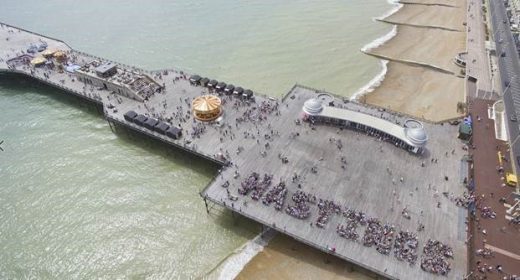
photo © Hastings Pier Charity
The four projects featured in this exhibition examine the diverse roles that architects have played in working with communities around the UK. Each example demonstrates a pragmatic response, creating flexible public buildings that give scope for further development. All of the selected schemes demonstrate the extensive engagement of the architects, sometimes continuing beyond the finished construction:
- Hastings Pier – designed by dRMM Architects (2016)
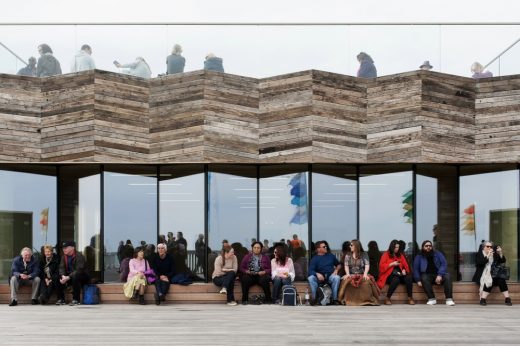
photo © James Robertshaw for dRMM Architects
Originally built in 1872, Hastings Pier was closed in 2006 following deterioration. In response the Hastings Pier and White Rock Trust (HPWRT) was formed by local people to raise funds to acquire the pier and reopen it, which it did in 2016. In 2017, the pier’s regeneration championed by dRMM Architects won architecture’s most prestigious award, the RIBA Stirling Prize. Following the Hastings Pier Charity going into administration, the pier was sold to a private owner in June 2018.
- Coniston Institute, Cumbria by Grizedale Arts (2017)
The Victorian artist and critic, John Ruskin spear-headed the creation of a purpose-built home for the Institute which was founded to support the well-being and education of the local copper mine-working community. The building was opened in 1878. Since 2011 Grizedale Arts has helped to rejunvenate and develop the Institute, working with volunteers from the village to create a multi-functional space that is home to over a dozen local interest groups. Takeshi Hayatsu Architects have recently worked with Grizedale Arts on small construction and design projects – including a bread oven and an information pavilion – to engage students and the local community.
- Old Manor Park Library, East London by APPARATA (2015)
This East London library closed in 2012 after 108 years of public service. Years of neglect rendered it no longer fit for purpose. With the previously-loved local landmark standing empty, Create London and Bow Arts, in partnership with Newham Council and the Greater London Authority, invited architects to reimagine the Grade II listed building as a new public space.
The winning proposal by Apparata responded to both the history of the building and its relationship with the surrounding area, and focused on using local suppliers and tradespeople. The architects worked as main contractors on the project, collaborating with designer-maker Philip T Ryan and a team of young apprentices and volunteers to strip out and survey the interior before refurbishing into a radical new spatial arrangement. Artists and architects work from affordable studios at the rear of the building, with the front area home to a community-focused arts residency, the Rabbits Road Institute.
- The Lookout, Loch Lomond National Park by Processcraft (2014)
In 2013, the Scottish Scenic Routes initiative, a three-year programme inspired by a similar idea in Norway, was inaugurated to boost Scottish tourism and local economies, and to encourage a closer look at the landscape. The Lookout is an exemplar from the project – a small, mirrored structure with seating, aiming to achieve a place for engagement, contemplation and a sensory filled response to the landscape.
Drawings, photographs, models and films detail the expansive roles that the four architecture practices took on, working not just as designers, but as contractors, makers, cheerleaders and activists.
Making It Happen: New Community Architecture has been designed by Hayatsu Architects to create a visitor experience that reflects the materiality and spatial qualities of each of the four featured projects. Exhibition visitors will cross the boardwalk of Hastings Pier, step onto a Ruskin-inspired tiled pavement, take a seat in a re-creation of a quiet space at Old Manor Park Library, and enjoy a place for reflection in the Lookout. The theme of craftsmanship and community co-ownership through hands-on making is integral to several of the projects. Initiatives such as the community bread oven and copper tiling detailed kiosk at Coniston will feature in the exhibition.
Making it Happen: New Community Architecture is curated by Pete Collard, curator at RIBA. A series of public events including workshops for families and children and adult lectures will support this programme celebrating the themes and works within the exhibition.
The Architecture Gallery at RIBA is open from 10am – 5pm Monday to Sunday and until 8pm every Tuesday. Free entrance. RIBA is at 66 Portland Place, London, W1B 1AD. Nearest tubes are Oxford Circus, Regent’s Park and Great Portland Street. For further information go to https://www.architecture.com/whats-on/making-it-happen-new-community-architecture
Since its foundation in 1843, the RIBA has amassed one of the world’s largest and richest architectural collections, which now comprises over 4 million drawings, books, models and photographs. The RIBA curates this collection for the general public and specialist audiences and makes it available for research through galleries and reading rooms at its headquarters at 66 Portland Place, London, and at the Victoria & Albert Museum (with whom the RIBA has an architectural partnership)
Follow @RIBA on Twitter for regular updates www.twitter.com/RIBA
24 Jan 2019
Future Trends Survey
Uncertainty and declining confidence amongst small practices: RIBA publishes latest Future Trends survey results
The latest RIBA survey of architects indicates a considerable fall in optimism about their future workload (RIBA Future Trends Survey December 2018 – Workload Index fell significantly to +3, from +10 in November).
Practices in Wales and the West of England were most pessimistic about their workloads (returning a balance figure of -10), while London (at +1) and the South of England (at +8) remained cautious about their medium-term prospects. The most significant fall was reported by firms based in the Midlands and East Anglia, with workload predictions tumbling to zero from +12 in November.
The North of England continues to remain the most optimistic area (returning a balance figure of +15), however the region is less positive than it has been in recent months.
Large practices (with 51+ staff) remain most positive about their future workloads, returning a balance figure of +60 in December 2018. Medium-sized practices (with 11 – 50 staff) returned a more modest result of +14, while smaller practices (with 1 – 10 staff) appeared considerably more nervous, returning a balance figure of just +1.
Forecasted workloads in the private housing fell dramatically in December (down to zero from +8 in November); the commercial sector also saw a decline, falling to a balance figure of -2 from zero. The public sector workload forecast fell to -5 (from 0) and the community sector fell to -3 (from +3).
The RIBA Future Trends Staffing Index fell again to +1 in December from +4 in November, suggesting a weakening in the employment market for salaried architects.
The staffing forecast for large practices (with 51+ staff) remained strong at +40, though down on recent highs. Medium-sized practices (with 11 – 50 staff) returned a balance figure of +14 but small practices (with 1 – 10 staff) moved into negative territory for the first time since April 2018, returning a figure of -1 and providing further evidence of increasing nervousness in the small practice sector.
RIBA Executive Director Members, Adrian Dobson, said:
“Our latest survey results continue to paint a mixed picture: while some practices (generally larger ones) report a steady pipeline of commissions, others (predominantly smaller ones) report difficulties as investors and developers continue to halt decision-making due to uncertainty.
The stalling of the house sales market now seems to be affecting confidence in the private housing sector – the main engine of growth in demand for architectural services in recent years. The decline in the private housing sector forecast perhaps explains the weakening of confidence in the small practice segment, which is particularly dependent on this work.”
RIBA London Events information from RIBA
Location: 66 Portland Place, London, UK
RIBA Events Archive
RIBA Events 2018
RIBA Exhibition on Perspective
RIBAJ 2018 Eye Line Competition
British architect Neave Brown awarded RIBA Gold Medal Architects 2017 Winner
RIBA Event London – Archive
RIBA Gold Medal for Architecture
Chartered Institute of Building
RIBA Trust Autumn Lecture Series 2009
London Architecture Events:
Bartlett School of Architecture Event
Comments / photos for the RIBA News & Events for 2019 page welcome

